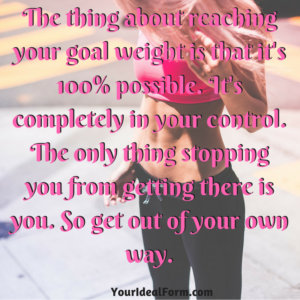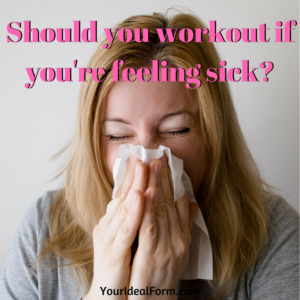
You CAN reach your goal. Even if you have a big, huge, hairy, audacious goal. You can get there! It won’t necessarily be easy though. You’re going to have to want it. Bad. You’re going to have to make your goal a top priority. You may have to give something up. But more than likely, you will gain so much more! Health, confidence, even a new zeal for life. Set aside the excuses and you will succeed.
The thing about reaching your goal weight (whether that’s on the scale or on the bar!) is that it’s 100% possible. It’s completely in your control. The only thing stopping you from getting there is you. So get out of your own way.
